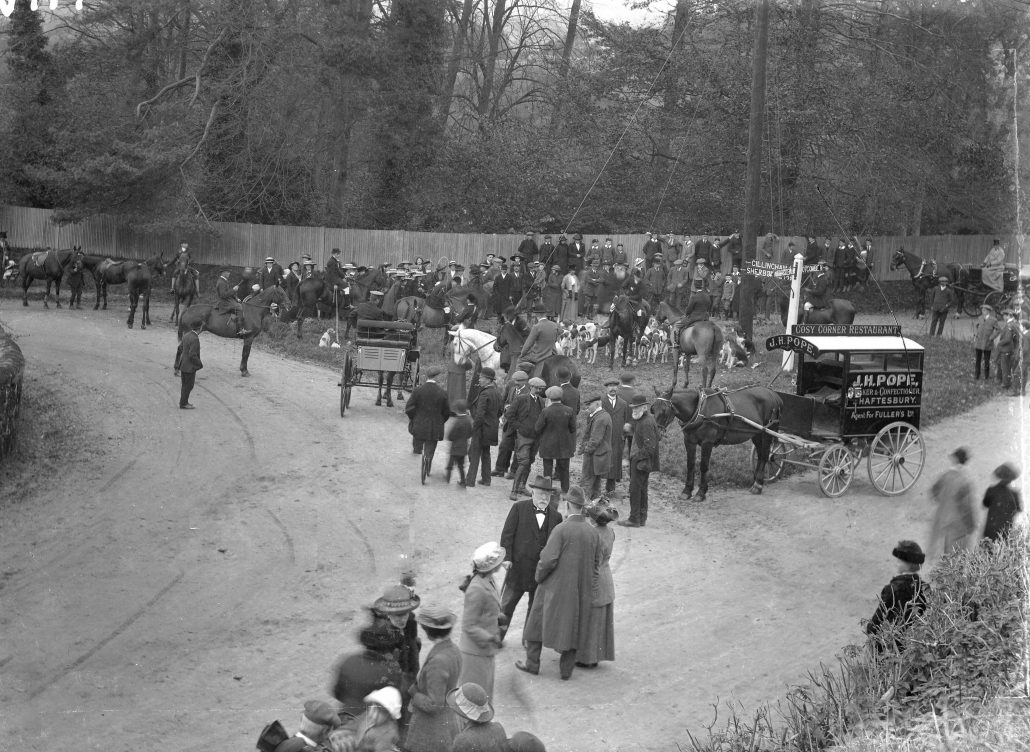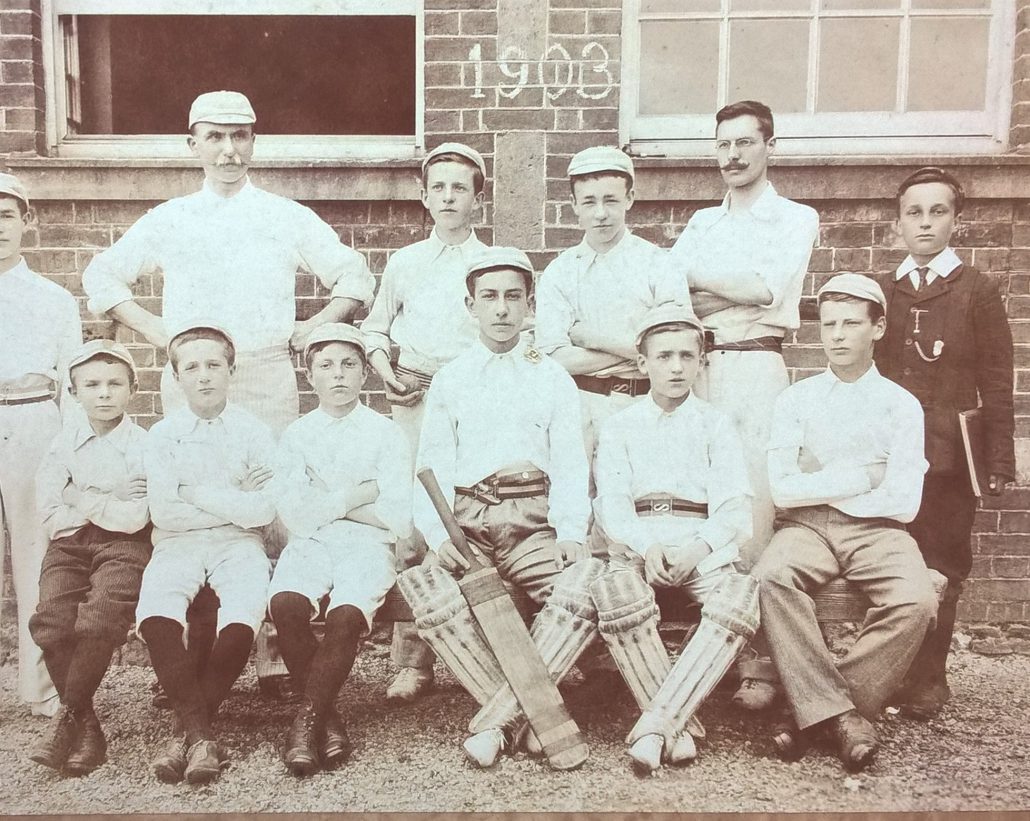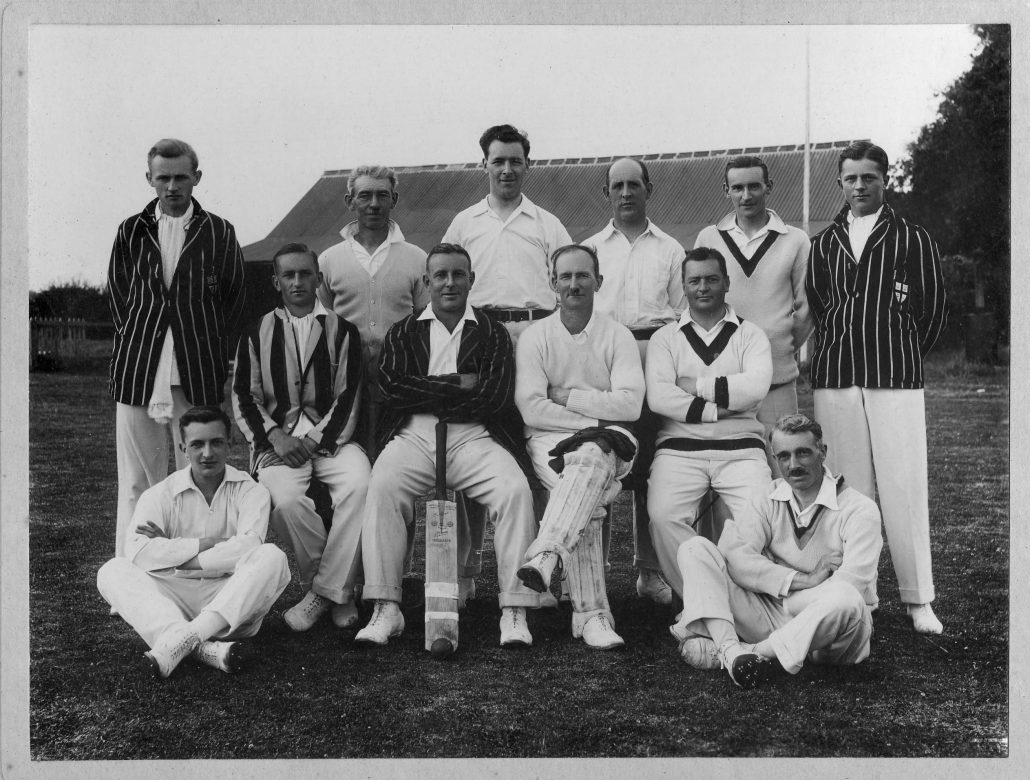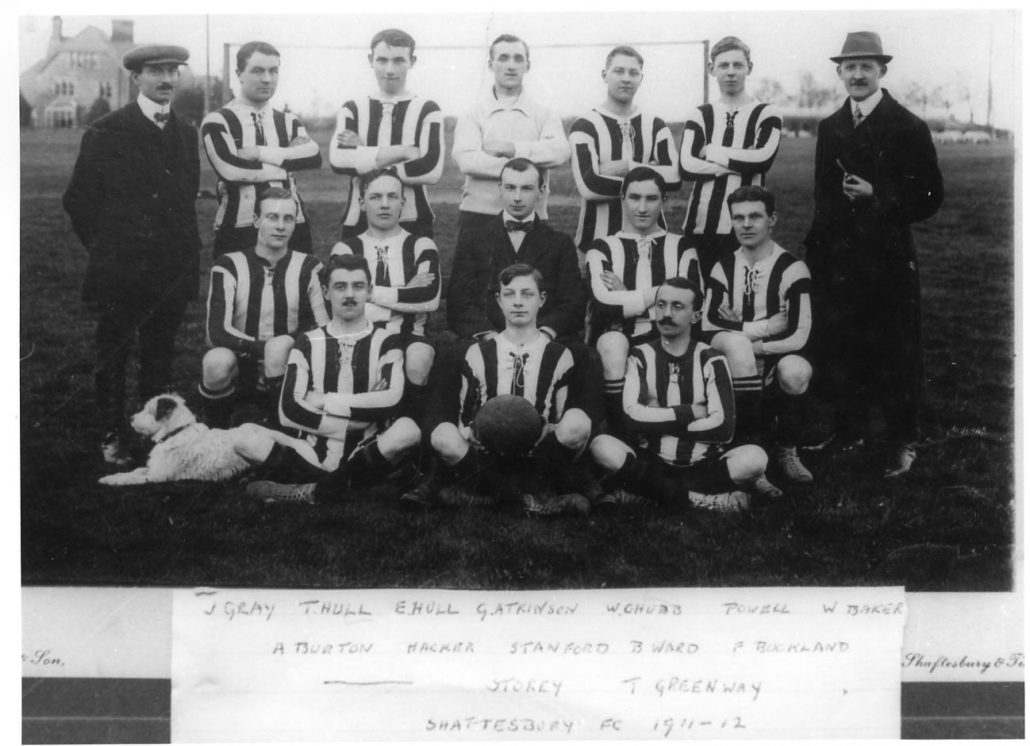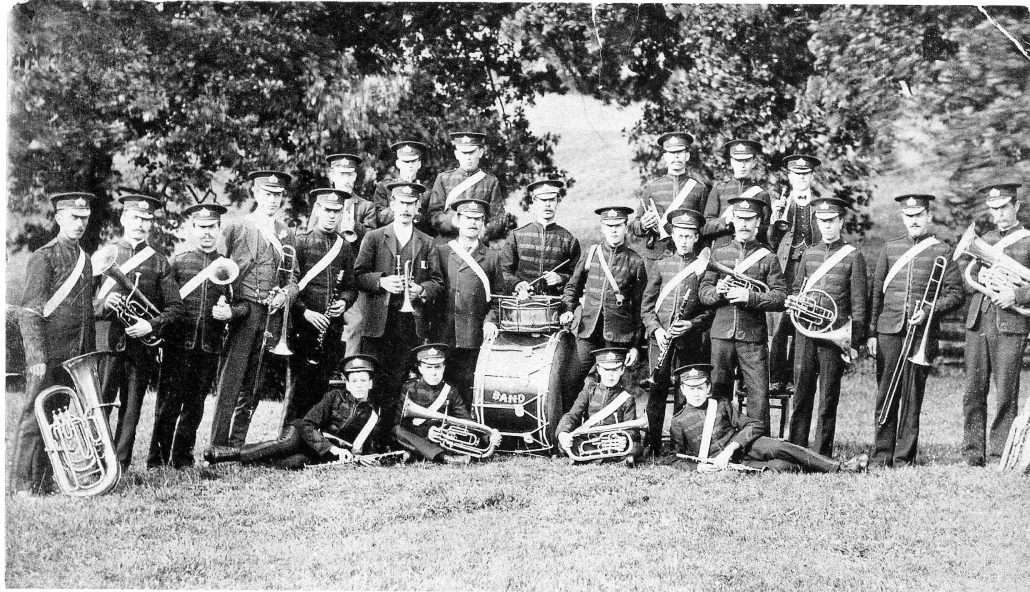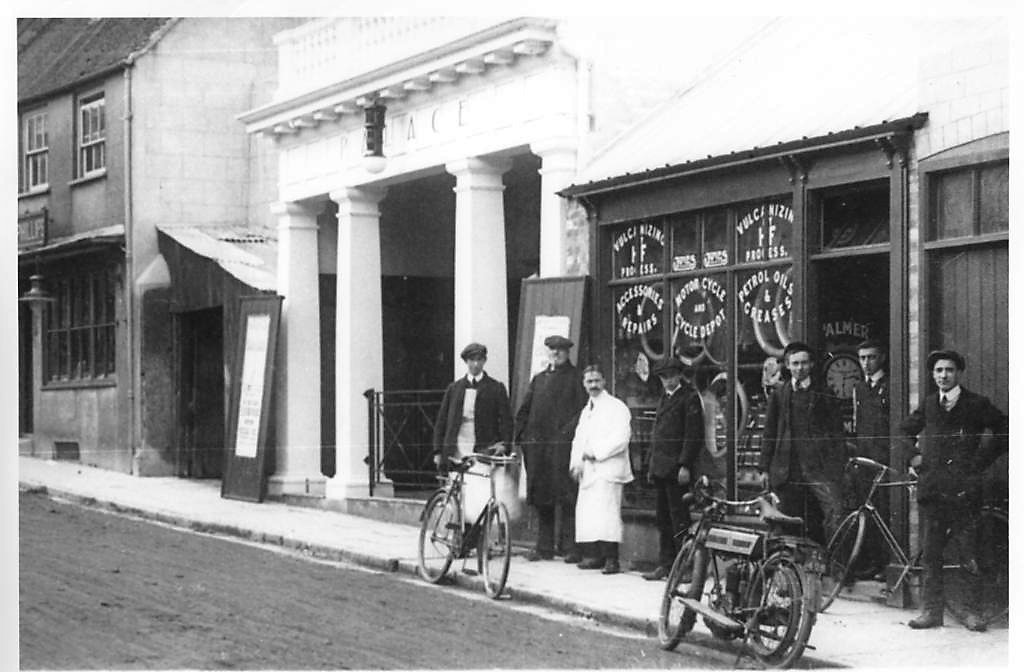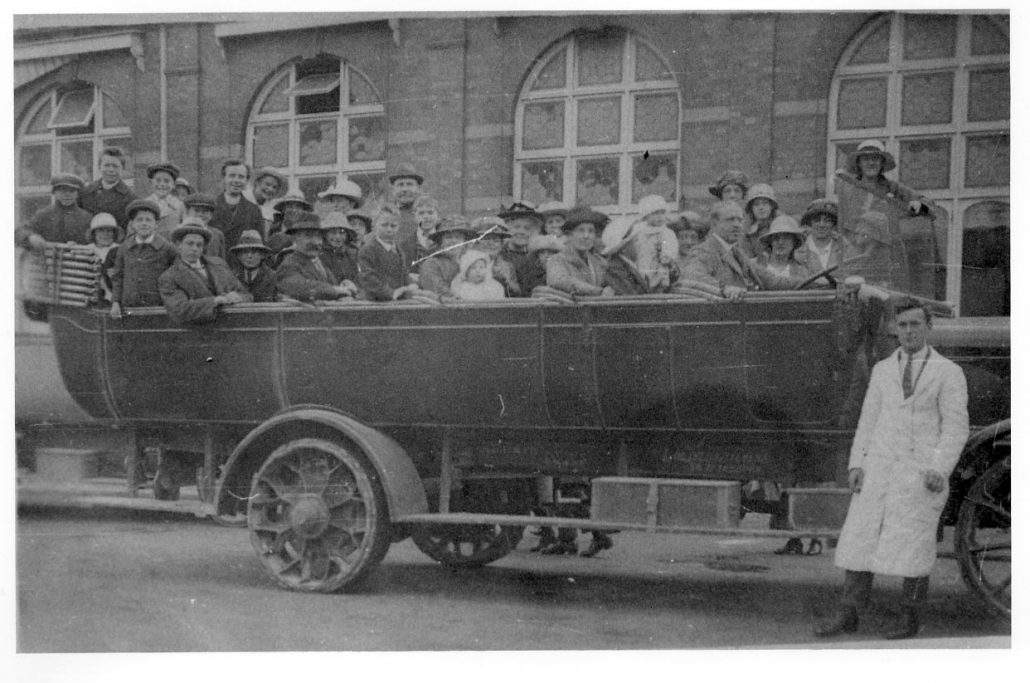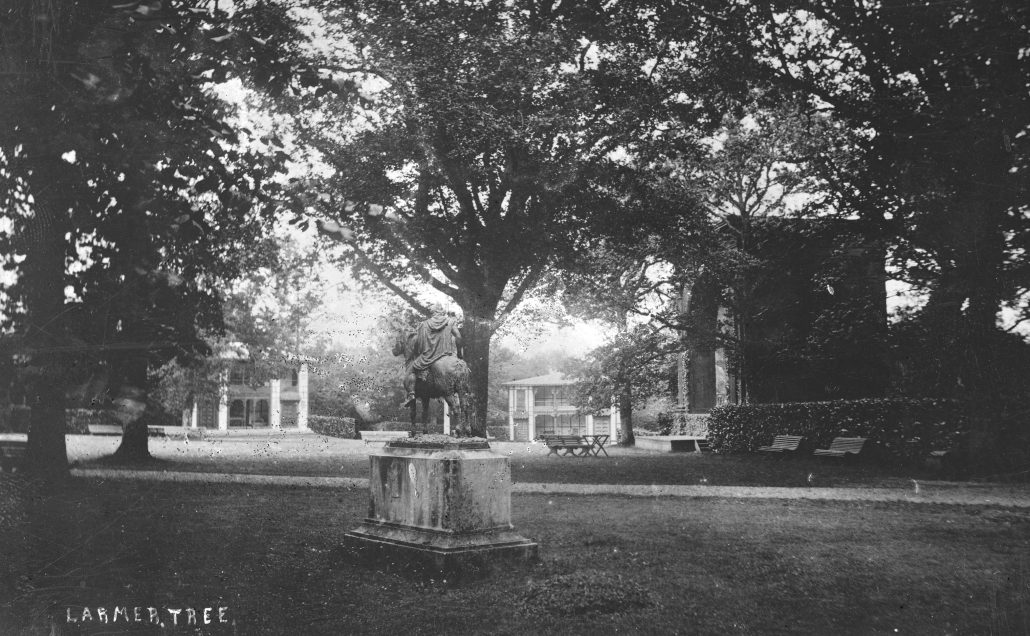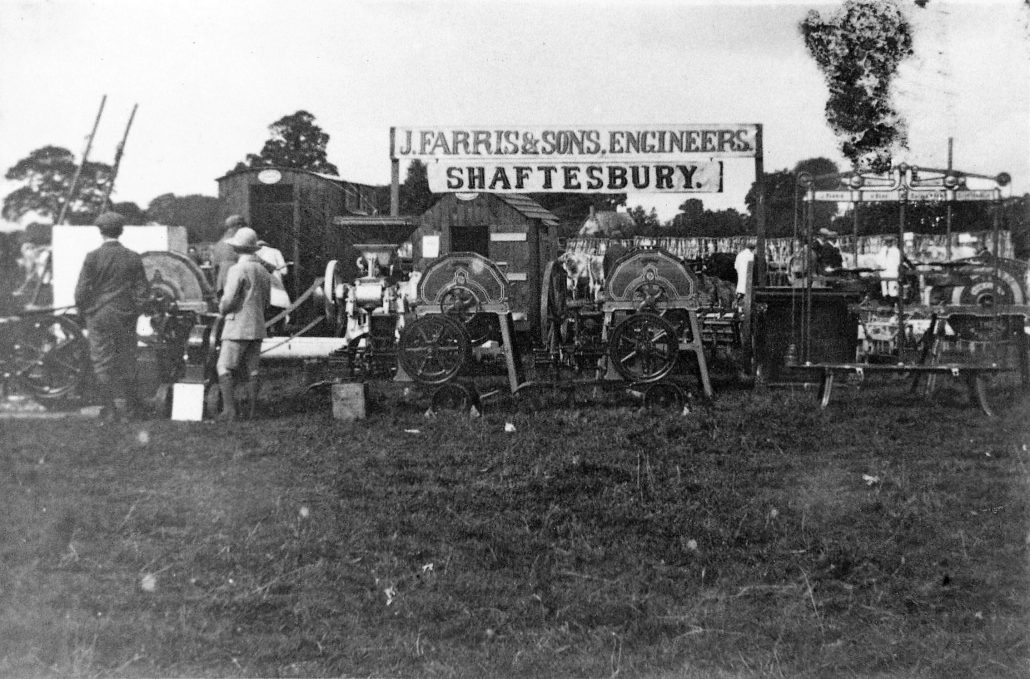Sport, Leisure and Entertainment
Sport and Sports Clubs
A wide variety of sport was enjoyed by Shastonians of all ages, varying from impromptu football matches and sledging to point-to-point meetings, shooting and hunting.
Children in St James practised football skills in the playground, and in winter, the hill below Park Walk was turned into one massive slide opposite the Two Brewers pub … not for the faint-hearted.
Pythouse Sports Club was started in 1870 as a private cricket club for the Benetts who owned Pythouse. They were very keen on cricket and even added two huge wings to Pythouse in 1880 to accommodate visiting cricket teams.
By early 1900 the new sport of lawn tennis was introduced and there is a photo of elegant ladies in long white dresses playing on the grass courts at the club. A 1920 brochure boasts that the club was used for preparatory tennis matches before Wimbledon and that the cricket ground was the best south of the Thames besides the Oval.
Hunting with hounds was a regular activity with Lord Portman’s Hunt, and a popular spectator sport for many. The hunt met at various venues, including on the Pensbury Estate, at the junction between the Motcombe and Gillingham Roads, just outside Shaftesbury.
Shaftesbury Cricket Club
Shaftesbury Cricket Club was founded by 1850, and possibly earlier, making it one of the oldest cricket teams in the county. Dr Tovey, the head of Shaftesbury Grammar School for many years including during the Great War, was a very keen cricketer, and not only supported it within the school, but also sought players from other schools, giving a scholarship to Victor Prince, a pupil at Salisbury Cathedral School, because he had showed such potential. Tragically Victor was killed on active service in 1918 aged 20. Shaftesbury Grammar School played against many local teams, including Shaftesbury Town, Gillingham Town, and Tisbury Town, as well as other local schools.
Motcombe House had a cricket team founded in the 1860s, and a village team was formed in 1900. Matches were played regularly, and a pavilion was built. The club reached its peak in the inter-war years, but fixtures continued throughout the war, even though some players were called up
Shaftesbury Bowling Club
In April 1914 a meeting was held to discuss the setting up of a bowling club. After considering Castle Hill as a possible site for the green, it was decided that the most suitable place for a bowling club was on part of the cricket field, part of which was already used by the tennis club. At the first committee meeting in May 1914 it was decided to buy two sets of bowls and a set of jacks. Bye-laws for the club were adopted and the first match between the council and the members was arranged.
A special members’ meeting was held in October 1914 when the sub – committee presented a report on building a green for a total cost of £48.11.6d.
It was agreed to accept this tender, money to be raised by a levy of 2 guineas (£2.10p) on each member. Members’ fees were set as a joining fee of one guinea and an annual subscription of 10/6d (52p).The first green was situated between the present green and Bleke Street. It opened on 14th July 1915 with a match between the Mayor and members of the Corporation on one side, and the club members on the other. The first away match was at Crewkerne in July 1915. In 1916 the club bought Holy Trinity Church Parish Room and moved it to the bowling green, as the club’s first pavilion.
During 1920 the club played six friendly matches, winning five of them, and they won the Macklin Cup thus also winning the Salisbury League.
in April 1921, it was decided to affiliate the club to the English Bowling Association. The Macklin Cup was retained and in 1922, County Cup matches commenced and Shaftesbury Bowls Club retained the Macklin Cup for the third and last time.
In April 1923, members donated money for repairs to the green. In November 1924 , the club had a surplus in the bank, twenty-six playing members and five honorary members. It was decided to hold a singles competition and a handicap singles and the vice president Mr Borley supplied a Challenge Cup. This trophy is still played for today.
Shaftesbury Football Club
The club was established in 1888. Their first success was winning the Dorset League Cup in 1900 and again in 1905/06 season, winning the Dorset Junior League. In the 1908/09 season Shaftesbury formed a reserve side and also a mid–week youth team side known as Shaftesbury Wednesday.
In the 1920’s the first youth team was formed called Shaftesbury Athletic.
Clubs and Societies
Although many Shaftesbury residents worked long hours in agriculture, commerce and trade, there was a wide choice of things to do in their free time, or during holidays.
Some activities were ‘improving’, such as the Women’s Adult School, based on Christian principles with the aim of teaching reading and writing skills; and temperance societies. In 1912, Mrs John Rutter invited women in the town to a ‘drawing room meeting’ to discuss the formation of a women’s temperance association. This was unanimously supported and the new branch was congratulated by the Reverend Ehlvers who chaired the meeting.
The Literary Institute on Gold Hill opened in 1852. In 1911 there were 200 members and 100 lady subscribers. The institute operated as a circulation library and had about 5,500 books and a billiard room.
Suffragettes met in the Market Hall. On one occasion they were subjected to explosives being ignited under the stage by their detractors, and had to be escorted to the Grosvenor Hotel by the police.
Shaftesbury Swimming Pool Council Minutes June 1st 1915
The Baths will be open to the public from June 1st to September 30th 1915 from 6.30 am to 8pm
The Grammar School, 12-1pm each weekday and 5-6pm on Tuesdays and Thursdays
Boy Scouts 6-8 pm, Mondays and Thursdays
Ladies 2-5 pm, Mondays and Thursdays
Gentlemen 1 bath, 6d, whole period 4/- After July 1st 1/-
Ladies Whole period 2/6d After July 1st 1/-
Admission by ticket only, which may be obtained at the Town Clerk’s Office. Mr J.K.Rutter, 31, Bell Street
E.J. Johnson, Mayor

